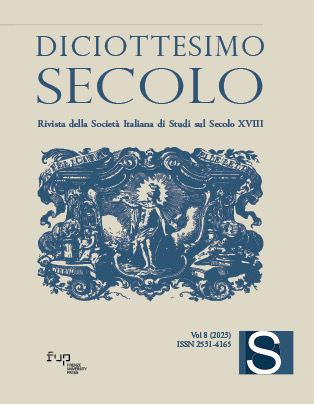Published 2023-07-01
Keywords
- public health,
- Sweden,
- periodical press,
- smallpox,
- Andrea Cesalpino
How to Cite
Copyright (c) 2023 Charlotta Wolff

This work is licensed under a Creative Commons Attribution 4.0 International License.
Abstract
This article examines the views on the inoculation of smallpox as they were presented in the Swedish periodical press during the second half of the eighteenth century. The analysis is based on digitized newspapers available in the online press databases of the Swedish and Finnish national libraries. The historical Swedish realm is an interesting case with regard to inoculation. First, extensive and systematic population records and statistics exist for both parts of the realm – Sweden and Finland – since the eighteenth century, an era when also the elementary foundations of a medical infrastructure and administration were cast. Second, as a part of the political and scientific interest in demography, inoculation was strongly promoted by the central administration and became a central element of public health policies that involved both medical professionals and local officials, including ministers and sacristans of the Lutheran church. Third, during the latter half of the 1760s, Sweden experienced an unprecedented moment of freedom of the press, which resulted in a strong development of the periodical and daily printed press. The newspapers analysed here very clearly reflect the proximity of politics, academia, and the press, in a large country with a relatively small but rapidly growing population and an even smaller educated elite. From the very first mentions in the 1750s onwards, inoculation was presented exclusively positively in the Swedish press, which reported the progress of the procedure in England and on the European continent. It was described as a victory of science and as an enlightened invention that could reduce excess mortality particularly among children. During the decade following the first inoculation in Sweden in 1754, no critical or sceptical views on inoculation appeared in the press, and the only concerns expressed were on how to counter religious arguments against the procedure and how to convince the peasants to inoculate themselves and their children. After the initial enthusiasm and optimism, the press expressed an increasingly acute awareness of the huge challenges associated with the necessity to inoculate the rural populations. In the 1790s and early 1800s, the press thus reported in detail on the situation of specific dioceses and parishes and on the number of inoculations and deaths respectively, which strengthens the impression that inoculation and demography were not only politically relevant but also something that would engage the enlightened reader. The interest of the Swedish case is precisely here: inoculation was presented extremely positively, as a matter of utmost importance for national progress, welfare and public health. The same enthusiasm and faith in the redemptive potential of science can be observed in the press immediately after the introduction of vaccination in the first years of the nineteenth century.

